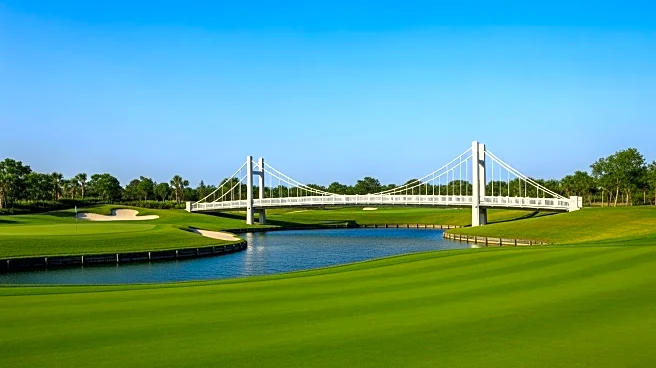What's Happening?
The United States Golf Association (USGA) has approached the state of Pennsylvania with a request for a $5 million grant. The funds are intended for the construction of a new bridge at the Oakmont Country Club. This initiative is part of the USGA's efforts
to enhance infrastructure at the prestigious golf venue, which has hosted numerous major tournaments, including the U.S. Open. The proposed bridge aims to improve accessibility and facilitate better traffic flow within the club's grounds, potentially benefiting both players and visitors.
Why It's Important?
The request for state funding underscores the significance of Oakmont Country Club as a key venue in the golfing world. By investing in infrastructure improvements, the USGA is likely aiming to maintain Oakmont's status as a premier location for major golf events. This could have broader economic implications for the region, as hosting high-profile tournaments can attract tourism, generate local business revenue, and enhance Pennsylvania's reputation in the sports industry. The grant, if approved, would represent a collaboration between state resources and sports organizations to bolster local infrastructure.
What's Next?
Should Pennsylvania approve the grant, construction plans for the new bridge at Oakmont Country Club would likely proceed, with timelines and project details to be finalized. The decision could prompt discussions among state officials and stakeholders about the allocation of public funds for sports-related infrastructure. Additionally, the USGA may continue to seek partnerships or funding opportunities to support other improvements at Oakmont and similar venues.
Beyond the Headlines
The request for a grant highlights the ongoing relationship between sports organizations and government entities in funding infrastructure projects. It raises questions about the prioritization of public funds for private venues and the potential benefits to the community. The development could also influence future policies regarding state support for sports facilities, balancing public interest with economic and cultural gains.














